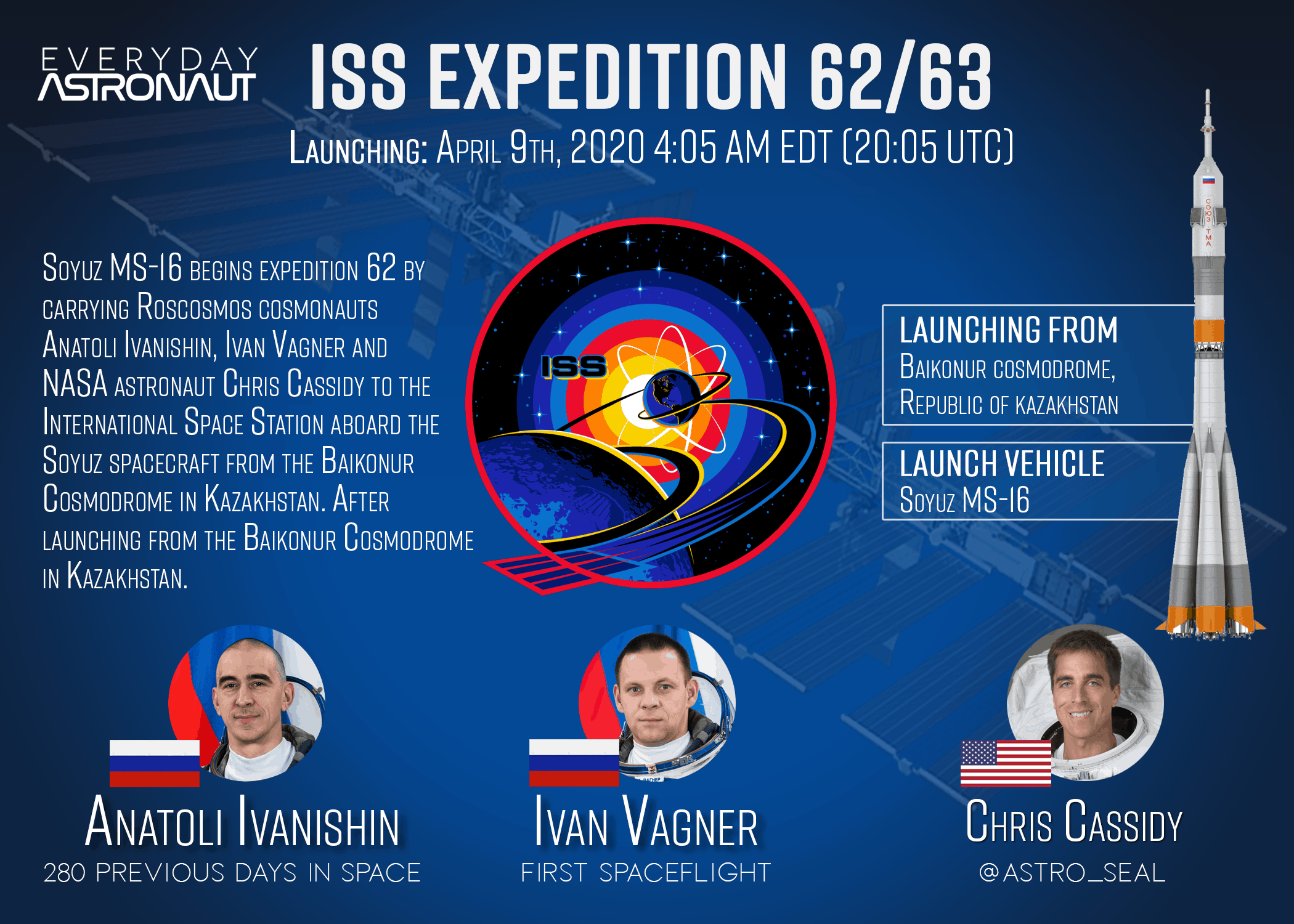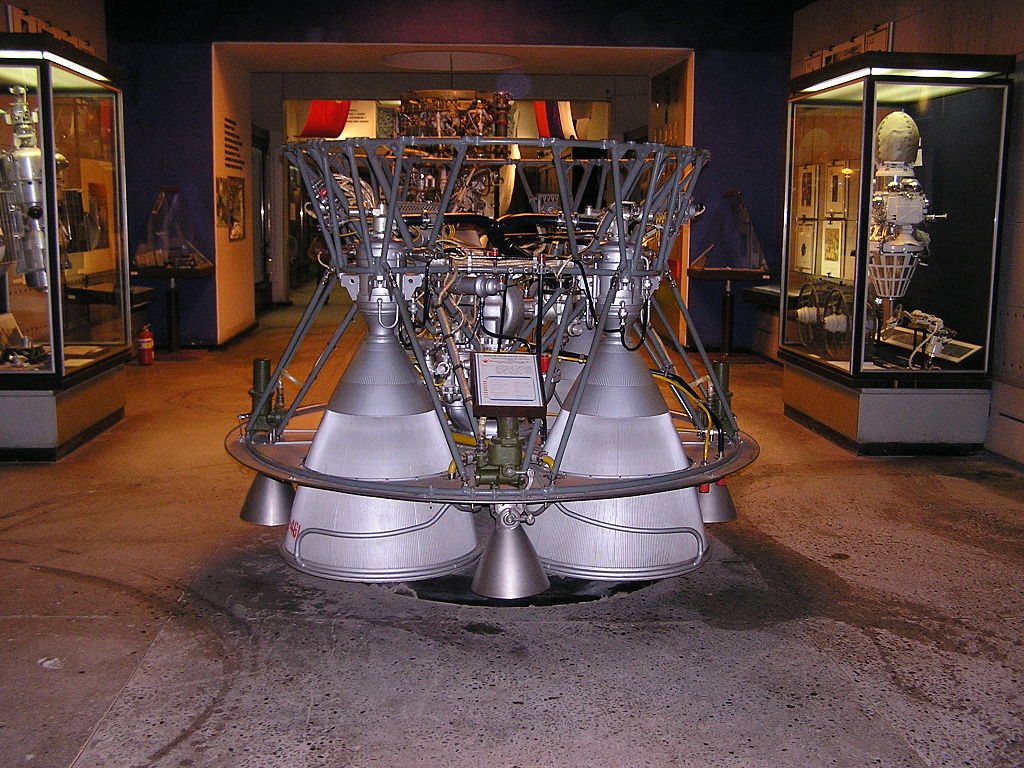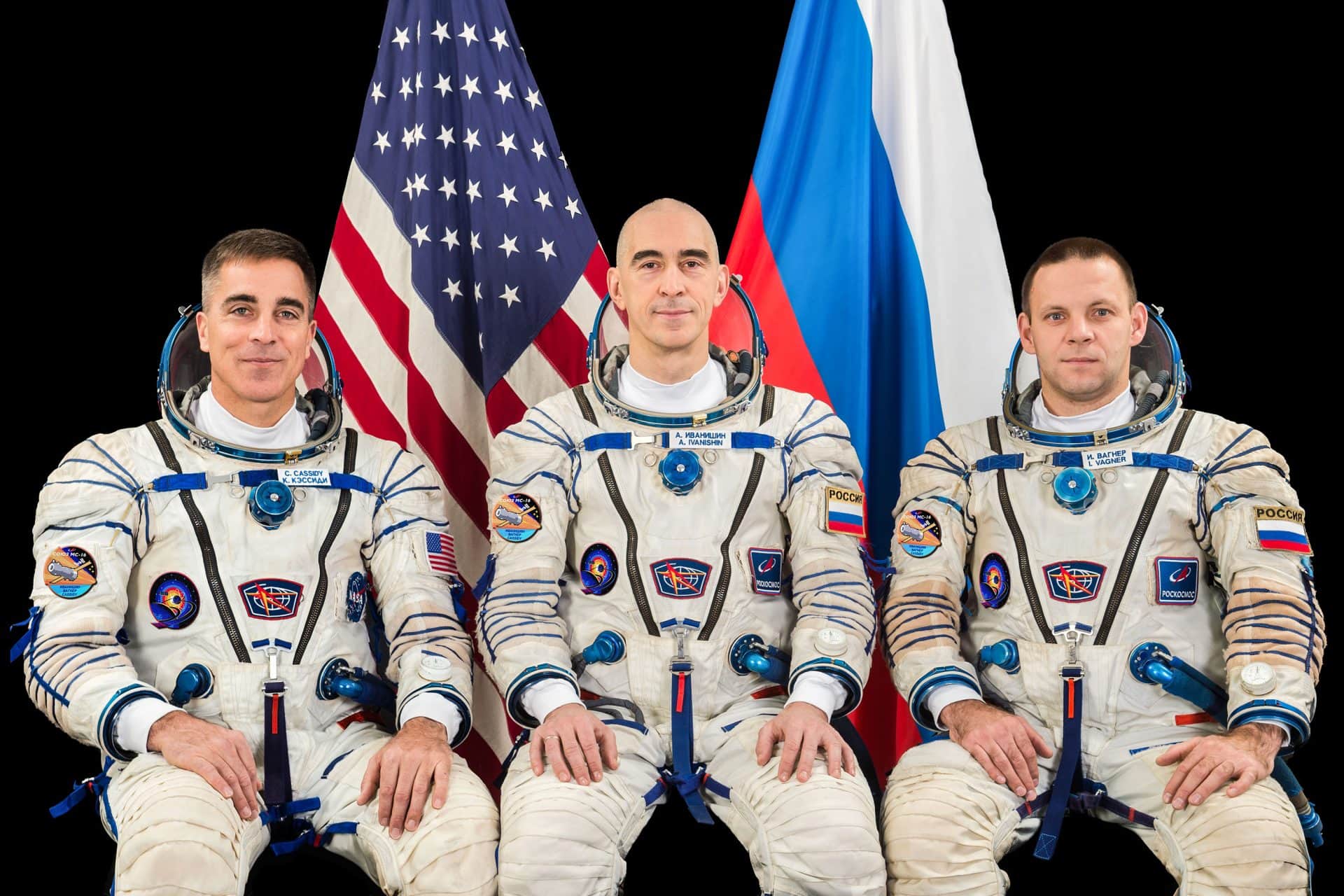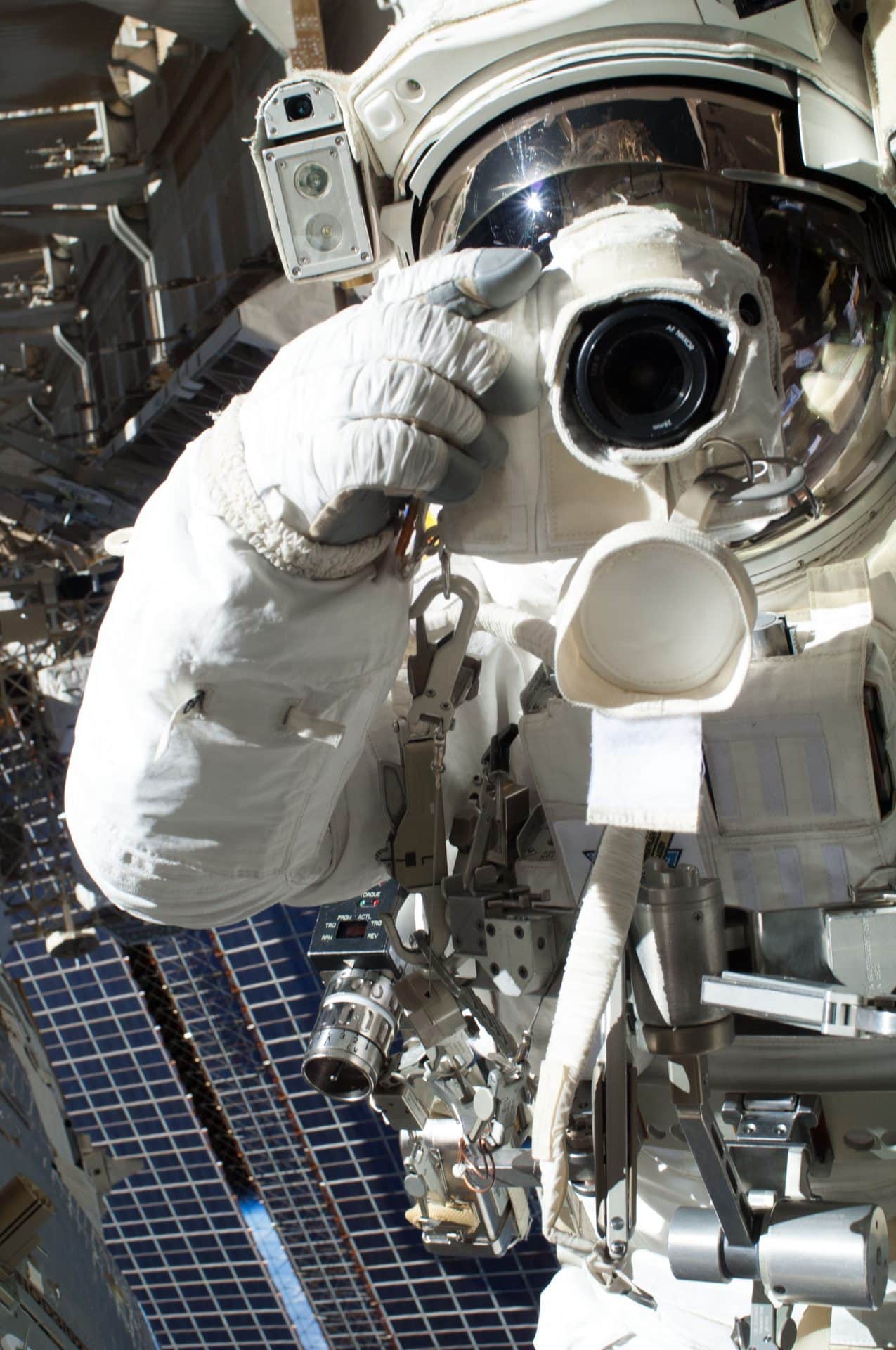Lift Off Time
|
April 9, 2020 – 08:05 UTC | 13:05 MST |
|---|---|
Mission Name and what it is |
Soyuz MS-16/Expedition 63 |
Launch Provider
|
Roscosmos |
Customer
|
NASA/Roscosmos |
Rocket |
Soyuz 2.1a |
Launch Location |
Pad 31/6, Baikonur Cosmodrome, Kazakhstan |
Payload mass |
7,080 kg (15,610 lb) |
Where is it going? |
International Space Station–408 km low-Earth Orbit |
Will they be attempting to recover the first stage? |
No. Soyuz rockets don’t have this capability. |
Where will the first stage land? |
It will crash into the steppes of Kazakhstan |
Will they be attempting to recover the fairings? |
No, Soyuz rockets do not have the capability. |
Are these fairings new? |
Yes |
This will be the: |
|
Where to watch |
NASA will livesteam the launch on NASA TV. |

What’s All This Mean?
Roscosmos’ Soyuz 2.1a rocket will launch its first crew on the Soyuz MS-16 mission. It will ferry three people to the International Space Station (ISS) for a six-month stay. The crew comprises Russian Cosmonauts Anatoli Ivanishin and Ivan Vagner, and NASA Astronaut Christopher Cassidy. Their ISS mission is Expedition 62/63.
The Soyuz 2.1a rocket will launch from Pad 31 at the Baikonur Cosmodrome in Kazakhstan. NASA and Roscosmos set the launch date for Thursday, April 9, 2020 at 08:05 UTC or 4:05 a.m. Eastern Daylight Time. NASA plans to livestream the launch.
COVID-19 Impact
Despite the ongoing COVID-19 crisis, the ISS partners agreed to launch the MS-16 mission as scheduled. They implemented new procedures to keep the crew and workers healthy. As an example, they isolated the MS-16 crew two weeks prior to their launch.

What is the Soyuz 2.1a Rocket?
Soyuz 2.1a version
The modern Soyuz 2.1 launch vehicle uses digital flight controls with significantly improved capabilities over the Soyuz-FG. The Soyuz 2.1 comes in two versions that use different third stages: 2.1a and 2.1b. The first launch of a Soyuz 2.1a was on November 8, 2004, from the Plesetsk Cosmodrome in northern Russia.
Starting with the MS-16 mission, the Soyuz 2.1a version is Roscosmos’s main launch vehicle for crewed missions to the ISS. In this configuration it is a three-stage launch vehicle, with the Russians counting the side boosters as the first stage:
- four side boosters (first stage)
- a central core booster (second stage)
- a third central stage
- fairings to encapsulate the Soyuz MS-16 spacecraft

Center Core Stage
The core stage uses an RD-108A engine with four combustion chambers and four nozzles. The engine uses kerosene and liquid oxygen propellents. The core also has four vernier thrusters, used for three-axis flight control once the side boosters separate. The core stage separates from the upper stage in a “hot staging” process. The upper stage engine is fired while both stages are still connected and separates them.
Side Boosters
Connected to the core stage are four booster rockets. These side boosters use the RD-107A engine. It uses the same propellants as rest of the Soyuz 2.1a’s other stages.
They locate the kerosene tanks in the cylindrical part and the liquid oxygen tanks in the conical section. Each engine has four combustion chambers and four nozzles. Each booster contains two vernier thrusters to control the rocket’s direction.
During side booster separation, the boosters peel off and cartwheel outwards away from the Soyuz 2.1a. We know the pattern they create as the “Korolev cross.” The name is an homage to rocket’s designer, Sergei Korolev. He was also the USSR space program’s Chief Designer in the 1950s and 1960s.

Third Stage Soyuz 2.1a and 2.1b
The third stage uses either an RD-0110 engine in the Soyuz 2.1a version, or an RD-0124 engine in the Soyuz 2.1b version. The MS-16 mission utilizes the 2.1a launch vehicle, with a third stage using an RD-0110 engine. Unlike cargo missions, the Fregat upper stage is removed for crew missions to the ISS. Using the Soyuz MS-16 spacecraft’s thrusters, the crew reaches the ISS.

RD-0110 rocket engine used on the Soyuz 2.1a launch vehicle’s third stage. Credit: Andrew Butko under Creative Commons license 3.0
What about the Crew?
Soyuz MS-16’s crew includes Russian cosmonauts Anatoli Ivanishin and Ivan Vagner, and NASA astronaut Christopher Cassidy. Once on the ISS, they become members of the Expedition 62 and Expedition 63 crews. Expedition 62 will end with the decoupling of MS-15 on April 17, 2020. The three MS-16 cosmonauts/astronauts will then become Expedition 63.
Original Russian MS-16 Crew Replaced
Originally, this mission would have marked the first spaceflight for cosmonauts Nikolai Tikhonov and Andrei Babkin. Roscosmos removed them from MS-16 because of an injury to the Soyuz commander, Tikhonov. Their backups, Ivanishin and Vagner, replaced them on February 19, 2020. Roscosmos did not want to break-up their crews. Roscosmos will reschedule Tikhonov and Babkin, likely to the MS-17 mission.
Last Soyuz Seat Paid for By NASA
Cassidy’s flight represents the final time NASA purchases seats on the Soyuz spacecraft from Roscosmos. On future missions, NASA will use American spacecraft from its commercial crew providers, SpaceX and Boeing. Going forward, both NASA and Roscosmos will then exchange seats to send crews to the ISS on each agency’s spacecraft.

Anatoli Ivanishin
Anatoli Ivanishin graduated from the Chernigov Higher Military Aviation School. He then served in the Russian Air Force as a jet fighter pilot. His flight experience includes 507 hours in the MiG-29 and the Su-27 jet fighters.
Between 2003 to 2005, Ivanishin completed cosmonaut training. In 2010, he served as the backup commander for the Soyuz TMA-20 mission. It flew to the ISS in December 2010.
Ivanishin’s first spaceflight was as a flight engineer aboard Soyuz TMA-22 in November 2011. That mission was part of ISS Expedition 29/30. His second trip into space was aboard Soyuz MS-01 in July 2016. On the ISS, he served as the commander of the Expedition 48 crew.
Soyuz MS-16 will mark Ivanishin’s third spaceflight. As part of the Expedition 62/63, NASA may require him to perform spacewalks. Hence, he received training at the Johnson Space Center (JSC) to use the EMU spacesuit and practice EVAs with it.
Ivan Vagner
Ivan Vagner graduated in 2008 from the Baltic State Technical University with a master’s degree in Aeronautical Engineering. He worked as a design engineer and assistant flight manager for the ISS program at Kilmov OJSC and RSC Energia.
Roscosmos selected Vagner for cosmonaut training in 2010. He completed his basic spaceflight training in 2012. They assigned him to the Expedition 53/54 crew in 2016. However, he was rescheduled because of delays with the Russian Nauka laboratory module.
He was reassigned to the backup crew for Expedition 62/63. In February 2020, he became the primary flight engineer on MS-16. Like Ivanishin, Vagner received training on USOS systems, specializing in Canadarm 2 operations.
Christopher Cassidy
After ten years of service in the US Navy as a Navy SEAL, NASA selected Christopher John Cassidy as an astronaut candidate in 2004. Cassidy finished his astronaut training in 2006. His first spaceflight was aboard space shuttle Endeavour as a Mission Specialist for STS-127 in 2009. He conducted three space walks to install and complete components of the Japanese Experiment Module (JEM).
Cassidy’s second trip to space was as a flight engineer for Expedition 35/36 in 2013. He conducted two more spacewalks. During one of those spacewalks, he took a famous “selfie” photograph.
MS-16 marks his third flight into space, where he will serve as a flight engineer for Expedition 62. Cassidy will become Expedition 63 commander upon the departure of Oleg Skripochka, Andrew Morgan and Jessica Meir. They plan a change of command ceremony with Skripochka for Wednesday, April 15, with MS-15 departing on Friday, April 17.







let’s hope that the last Soyuz NASA paid mission goes well and that the crew aboard Soyuz go and come back safely.